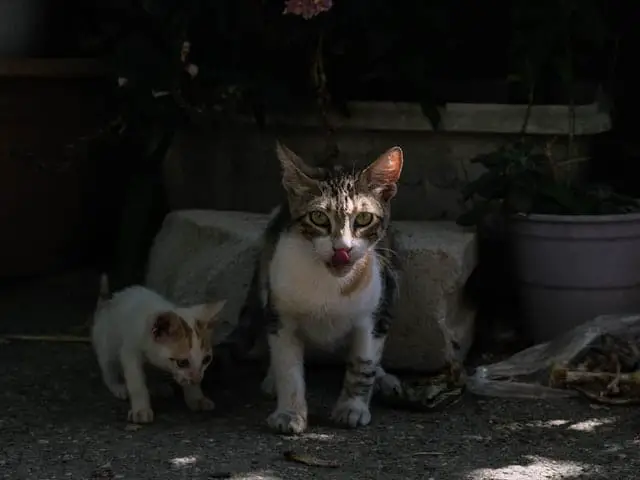
Sometimes cats get really unbearable with constant meowing and crying at night. This is actually normal behavior because they are the classic sounds of a cat in heat. The solution? Sterilize them.
Cats of reproductive age that have not been spayed go into heat – or estrus – several times a year, and ovulate with each mating. These cats are called “queens” and their heat cycle usually lasts between seven and ten days, during which time their behavior becomes anything but subtle. So how do we know that a cat is in heat? What are the typical sounds of the cat in heat?
The sounds of the cat in heat: meowing, whining and purring
We may already know the stressed meowing sounds of cats in heat when they call a mate. In addition to these vocalizations, other cat sounds in heat sometimes include sweet, melodious purring. Cats in heat also exhibit more affectionate behavior than usual.
The wailing sounds of the “queen” in heat are usually accompanied by body language, such as assuming the accompaniment position. This is her way of warning males that she is ready to get pregnant.
How do male cats respond to the sounds of cats in heat?
Although males do not go into heat, unsterilized ones become excited when they smell the presence of a female in estrus. They can concentrate on locating a queen enough to venture far and wide to find one.
These unspayed males urgently call for a female, and this behavior frequently occurs at night. For sure we have heard a cat in the neighborhood looking for a mate, so we know what sounds we’re talking about.
A male cat has a tendency to disappear from the house, spray urine, and become aggressive towards other cats (and even humans) when hunting for a mate.
To stop the sounds of heat the only solution is sterilization
The only way to prevent a female from going into heat, and a male cat from looking for a queen (and to avoid cat sounds, of course), is to neuter our cats. Some say we should have at least one period or even have a litter before neutering, but that’s just a myth.
Cats of both sexes should be neutered when they reach sexual maturity, which occurs between four and six months of life. Older cats, however, can be spayed at any age, but many vets prefer not to do this on a cat in heat to avoid circulatory complications. Veterinarians also recommend waiting up to two weeks after giving birth before spaying a recently pregnant cat. In any case, we consult the veterinarian for more information.
What are the other benefits of neutering cats?

In addition to avoiding pregnancy, this procedure has other benefits for both male and female cats. Unsterilized male cats have a higher risk of testicular cancer and prostate disease, while unterilized females have a higher risk of breast and uterine cancer, as well as serious uterine infections.
Unterilized females, if allowed to circulate freely, tend to struggle with other females, and therefore risk injuries and diseases like males. Furthermore, a pregnancy is risky for a female, especially when she is no longer very young.






